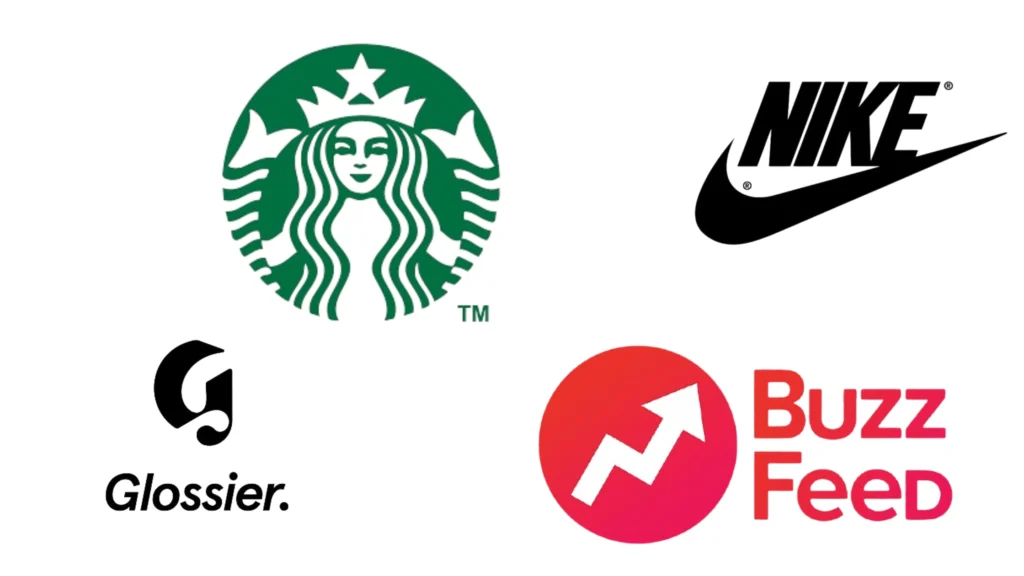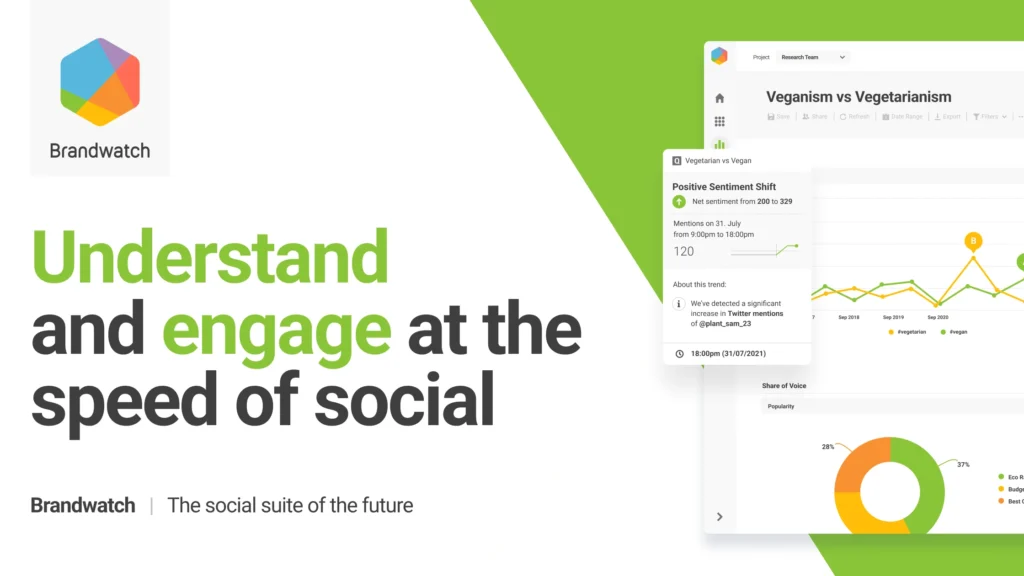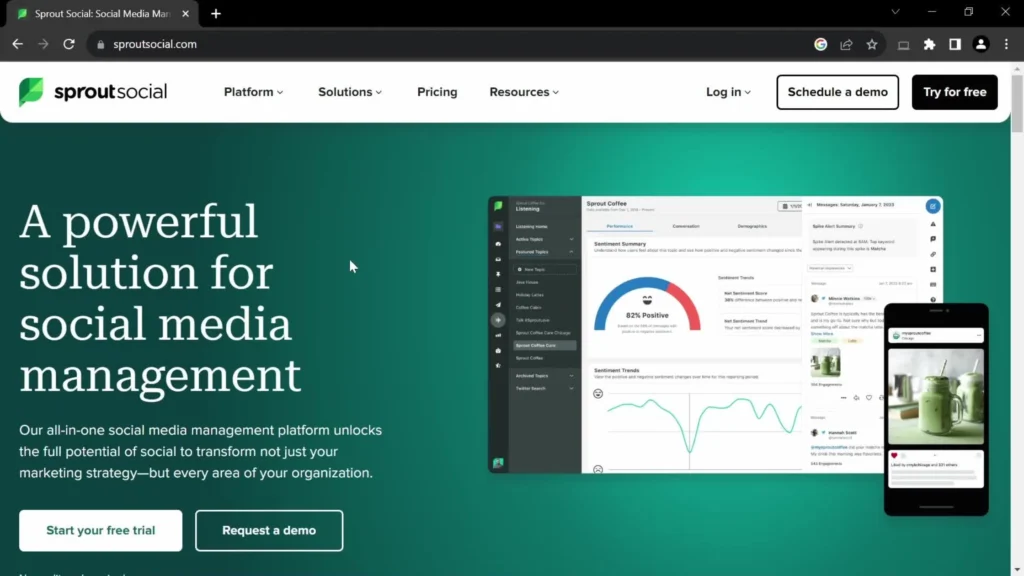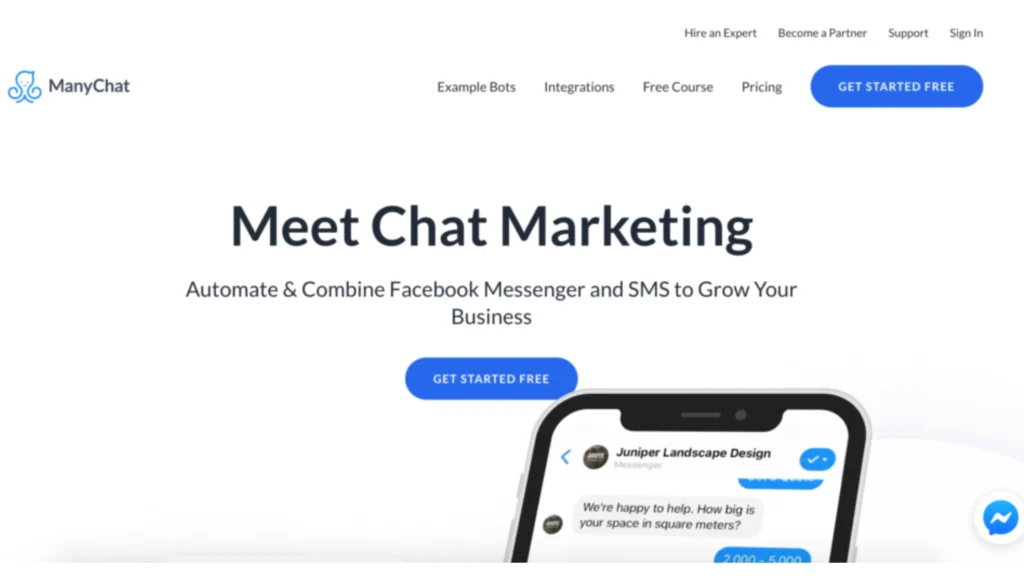Facebook is one of the largest and most widely used social media platforms globally, with billions of active users. It offers a wide variety of tools and features, from organic posts to advanced ad targeting, making it an essential platform for businesses of all sizes.
Facebook marketing has become an indispensable part of any business strategy, providing the opportunity to connect with a diverse audience, increase brand visibility, and drive conversions. With its constantly evolving features, businesses can adapt their strategies to stay relevant and competitive.
In this guide, we will cover the latest trends, strategies, and tips to help you make the most of Facebook marketing strategy in 2025. Whether you’re just getting started or looking to optimize your existing campaigns, our blog provides valuable insights for your success.

What Is Facebook Marketing?
Facebook marketing refers to the use of Facebook’s features, tools, and advertising options to promote a business, engage with an audience, and drive conversions. It involves creating organic posts, paid ads, and other content that helps to raise awareness, build relationships, and achieve business goals.
There are two main types of Facebook marketing
- Organic – Organic marketing includes posts, stories, and interactions with followers that don’t involve payment.
- Paid – Paid marketing involves running advertisements on Facebook, where businesses can target specific demographics to maximize reach and drive targeted results.
Benefits Of Facebook Marketing For Your Business
1. Improved Brand Visibility
Facebook’s massive user base gives your business the opportunity to reach a broad audience. Regular engagement through posts, ads, and promotions can significantly improve your brand’s visibility and recognition across different demographics.
2. Lower Marketing Expenses
Compared to traditional marketing channels, Facebook marketing is cost-effective. With flexible budget options for both organic posts and paid ads, businesses can tailor their campaigns to suit their financial capacity while still reaching a large audience.
3. Audience Targeting
Facebook’s powerful targeting tools allow businesses to focus on specific audiences based on factors like age, location, interests, behavior, and more. This ensures your content and ads reach the right people who are more likely to engage and convert.
4. Direct Customer Connections
Facebook allows businesses to engage directly with customers through comments, messages, and reviews. This fosters a stronger relationship with your audience and helps build trust, leading to increased loyalty and customer retention.
5. Valuable Data Insights
Facebook’s built-in analytics tools provide valuable insights into your audience’s behavior and the performance of your content. These metrics can guide future marketing decisions, helping you optimize your campaigns for better results and ROI.
How To Create A Facebook Marketing Strategy
1. Define Clear Goals
Setting clear, specific goals is the foundation of a successful Facebook marketing strategy. Whether your goal is to increase brand awareness, drive more traffic to your website, or generate qualified leads, it’s important to have measurable objectives in place.
If your goal is to boost brand awareness, a clear objective might be to reach 10,000 users with a campaign within a month. For lead generation, your goal could be to collect 500 new email sign-ups through Facebook ads. These goals should tie directly to your overall business objectives, helping you track progress and determine if your efforts are delivering results.
Example: A clothing brand might set a goal to increase sales by 20% in the next quarter through Facebook advertising by targeting users who have shown an interest in fashion-related content.
2. Identify Your Target Audience
Understanding who you’re speaking to on Facebook is critical for effective marketing. Use Facebook’s Audience Insights tool to analyze your existing followers. Look at factors like age, location, interests, and behaviors to identify common traits.
With this data, you can build a detailed buyer persona that guides your content creation and ad targeting. For instance, if you’re selling fitness products, your ideal audience may include individuals between 25-45 years old who are interested in health, wellness, and exercise.
Example: A fitness brand targeting women aged 25-40 who follow healthy living blogs and engage with fitness-related content on Facebook could tailor their content to feature workout routines or healthy meal tips.
3. Conduct a Content Audit
Before moving forward, take a step back and review your existing Facebook content. What types of posts have generated the most likes, shares, and comments? Look for patterns in topics, formats, and posting times that resonate with your audience.
Identify which content types (like videos, images, or blog links) perform best, and why they stand out. This insight will allow you to focus on creating similar high-performing content.
Example: If posts with customer testimonials have higher engagement than promotional content, you might consider integrating more user-generated content into your strategy to build trust and encourage engagement.
4. Create Engaging Content
Now that you know what your audience likes, it’s time to create content that captures their attention. A successful content plan will include a mix of educational, entertaining, and promotional posts. Use eye-catching visuals, such as vibrant images or short videos, to increase engagement.
Interactive content like polls, quizzes, or “ask me anything” sessions can also help keep your followers engaged and encourage more conversations. Experiment with different types of posts, such as behind-the-scenes content, product demos, or industry news, to see what resonates the most.
Example: A food delivery service might create a series of short recipe videos featuring their meals, alongside polls asking followers about their favorite dishes, increasing both engagement and brand loyalty.
5. Optimize Posting Schedule
Timing is everything when it comes to Facebook engagement. Use Facebook Insights or third-party tools like Sprout Social to find out when your audience is most active on the platform. Aim to post during these peak times to maximize your reach and engagement.
For instance, if you notice your audience is more active in the evenings, schedule your posts around that time. This way, your content has a higher chance of being seen by more people, driving better interaction.
Example: A digital marketing agency may find that their audience engages most in the late afternoon, so they schedule all their important content—like blog posts or event promotions—around 4 PM to catch their followers when they’re most active.
6. Leverage Facebook Features
Facebook offers a variety of features that allow you to engage with your audience in more creative ways. Stories, Live videos, and Messenger are tools that help you diversify your content and deepen engagement.
Facebook Stories are a great way to share short, behind-the-scenes clips or quick updates. Live videos allow you to connect with your audience in real-time, whether it’s for Q&A sessions or product launches. Using Facebook Messenger, you can create automated responses or even offer customer support directly through chat.
Example: A beauty brand could use Facebook Live to host a real-time makeup tutorial, allowing viewers to ask questions and interact with the brand as they watch. Stories could feature daily beauty tips or limited-time offers.
7. Implement Facebook Advertising
If you want to reach a larger audience and drive faster results, Facebook’s ad platform is a powerful tool. Start by defining your target audience, and experiment with different ad formats such as carousel ads, video ads, and dynamic product ads.
Each format offers unique benefits: carousel ads allow you to showcase multiple products in one post, while video ads are great for capturing attention and demonstrating products in action. You can also retarget users who have interacted with your page or visited your website, increasing the likelihood of conversions.
Example: An online bookstore could create a carousel ad to promote multiple books in a series, targeting users who have previously shown interest in similar genres.
8. Monitor and Analyze Performance
Once your campaigns are live, it’s crucial to track their performance regularly. Use Facebook Insights to review metrics such as reach, engagement, clicks, and conversions. Look for trends in your posts’ performance, and use that data to refine your strategy.
For instance, if you see that videos are generating more engagement than image posts, consider shifting your focus toward creating more video content. Don’t forget to analyze your ads as well—adjust targeting, creatives, or bidding strategies based on ad performance to ensure optimal results.
Example: A software company running Facebook ads for a free trial might notice that their ad performance drops after the first week. By adjusting the ad copy or targeting based on performance data, they can optimize the campaign to increase sign-ups.
4 Successful Facebook Marketing Strategy Examples To Inspire Your Brand

1. Starbucks
Starbucks has mastered the art of using Facebook to connect with customers emotionally. Their posts often feature stories of real-life customers and how their coffee is part of their daily lives.
They engage with their audience by asking questions and running interactive campaigns, such as polls and contests. Starbucks also leverages user-generated content, encouraging customers to share their photos with branded hashtags. This builds a sense of community around the brand, making their followers feel personally connected to Starbucks.
Example: Starbucks’ seasonal campaigns, such as the launch of their fall drinks, often feature stories and vibrant visuals that encourage customers to share their own experiences. They also use Facebook’s live video feature for behind-the-scenes looks at new product launches.
Takeaway: By integrating storytelling and fostering interaction, Starbucks creates a community feel while driving brand loyalty.
2. Nike
Nike’s Facebook strategy focuses on creating inspirational content that aligns with their brand’s values of perseverance and achievement. They share videos, motivational quotes, and success stories that resonate with their target audience’s values and aspirations.
Nike also uses user-generated content (UGC) to showcase real athletes and everyday customers who use their products. This not only provides social proof but also increases engagement by making their followers feel a part of the brand’s mission.
Example: Nike’s #JustDoIt campaign regularly includes customer stories, reposting photos of athletes at all levels wearing Nike gear, making their audience feel empowered and involved.
Takeaway: Nike’s success comes from its ability to blend powerful storytelling with community-driven content that motivates and unites their audience.
3. BuzzFeed
BuzzFeed’s Facebook page is known for its highly shareable content that often goes viral. They mix humor with relatable topics, creating posts that their audience can’t help but engage with and share. BuzzFeed uses a mix of quizzes, listicles, and memes to keep their content lighthearted and fun.
Their posts are specifically designed to be engaging and shareable, which has helped them build an extensive following on Facebook.
Example: BuzzFeed’s viral quiz posts and funny memes regularly generate high engagement rates. Their “which character are you” quizzes and relatable, humorous content resonate with their audience, leading to shares and comments.
Takeaway: BuzzFeed succeeds by creating content that’s easily shareable and encourages audience interaction, boosting organic reach.
4. Glossier
Glossier has built a loyal community by using Facebook as a platform for direct communication with their audience. Their Facebook page features customer testimonials, beauty tips, and user-generated content.
Glossier interacts with its community by responding to comments and using polls to involve followers in product development. They also use Facebook’s live video and Stories to give real-time updates and engage their audience directly.
Example: Glossier’s product launch campaigns include behind-the-scenes content, sneak peeks, and product teasers, while actively asking their audience for feedback, creating a two-way conversation between the brand and its followers.
Takeaway: Glossier thrives by fostering a close-knit community and using Facebook as a tool for open communication and engagement with its audience.
These four brands demonstrate how using Facebook effectively can create strong connections with an audience, increase engagement, and drive business success. Whether it’s through storytelling, humor, or community building, these strategies are all valuable approaches to inspire your own Facebook marketing efforts.
Best Tools For Facebook Marketing
Here are the 5 best tools for Facebook marketing:
Brandwatch

Brandwatch is a comprehensive social media marketing tool that offers powerful reporting, user-friendly dashboards, and AI-based analysis for Facebook marketing.
Brandwatch provides a suite of features including post scheduling, community management, performance tracking, and ad management. It allows marketers to schedule posts, respond to customer interactions, track metrics across 500 days of data, manage ad campaigns, and run influencer marketing initiatives.
Marketers should choose Brandwatch for its all-in-one approach to Facebook marketing. It offers valuable insights across every aspect of Facebook strategy, from content creation to audience engagement and ad performance. The AI-powered analysis helps uncover trends and make data-driven decisions, making it ideal for businesses looking for comprehensive Facebook marketing management.
Sprout Social

Sprout Social is a social media management platform that offers tools for social listening, scheduling, analytics, and AI-powered insights specifically for Facebook marketing.
This tool provides features for content scheduling, performance analytics, and audience insights. It offers AI-powered content suggestions, predictive analytics for optimal posting times, and comprehensive reporting on engagement metrics and audience demographics.
Marketers should choose Sprout Social for its user-friendly interface and powerful analytics capabilities. Its AI-powered features streamline content creation and provide actionable insights, making it particularly useful for businesses looking to optimize their Facebook content strategy and improve engagement.
Meta Ads Manager

Meta Ads Manager is the official platform provided by Facebook for creating, managing, and analyzing Facebook ad campaigns.
This tool allows marketers to create and manage Facebook ad campaigns, set targeting parameters, control ad spend, and analyze ad performance. It provides detailed insights into campaign metrics and offers effective retargeting options.
Marketers should choose Meta Ads Manager for its direct integration with Facebook’s ad ecosystem. It offers the most comprehensive and up-to-date features for Facebook advertising, making it essential for businesses heavily invested in Facebook ads.
Hootsuite Social Advertising

Hootsuite Social Advertising is a scalable social media management tool that offers a unified dashboard for managing Facebook marketing alongside other social platforms.
This tool provides features for content scheduling, social listening, analytics, and ad management across multiple social media channels. It offers customizable reports, trend analysis, and competitor benchmarking.
Marketers should choose Hootsuite for its versatility and ease of use, especially for larger teams managing multiple social media accounts. Its unified dashboard and comprehensive reporting features make it ideal for businesses looking to streamline their social media efforts across platforms.
Manychat

Manychat is a specialized tool for creating and managing chatbots for Facebook Messenger marketing.
This tool allows marketers to build automated conversation flows, set up keyword triggers, and create AI-powered chatbots. It offers features like AI intents, which understand user queries, and an AI Flow Builder Assistant that can create complete automations based on business goals.
Marketers should choose Manychat for its powerful chatbot capabilities, which can significantly enhance customer engagement on Facebook Messenger. Its AI-powered features and easy-to-use interface make it an excellent choice for businesses looking to automate customer interactions and improve response times on Facebook
Conclusion
Incorporating a well-structured Facebook marketing strategy is essential for any business looking to engage its audience, build brand awareness, and drive results. Whether you’re leveraging Facebook’s advanced ad tools, engaging with your community through content, or analyzing performance to refine your approach, these steps are crucial for success on the platform.
As a social media expert, I understand how important it is to adapt and stay ahead of trends in the ever-changing landscape of digital marketing. The tools and strategies discussed here will help you build a solid foundation, but it’s essential to continuously monitor, experiment, and optimize to achieve long-term success. With the right approach and tools, Facebook can be a powerful platform to connect with your audience and elevate your business to new heights.
